Cat-back, Turboback, and Axle-Back Exhausts: A Comprehensive Guide
We know that somewhere along the upgrade path, most car enthusiasts intend to upgrade some portion of the exhaust. But, there are several different sections and each section can be made of variable parts. It’s important to have an understanding when shopping for exhaust upgrades or to simply know what modifications you have installed in order to get the correct tune.
For the most part, an upgraded exhaust system for a turbocharged car will come in one of three varieties; an axle-back, a cat-back, or a turboback exhaust. Here we’ll go over each type, the components they typically contain, and talk about the costs and benefits of each.
Axle-Back Exhaust
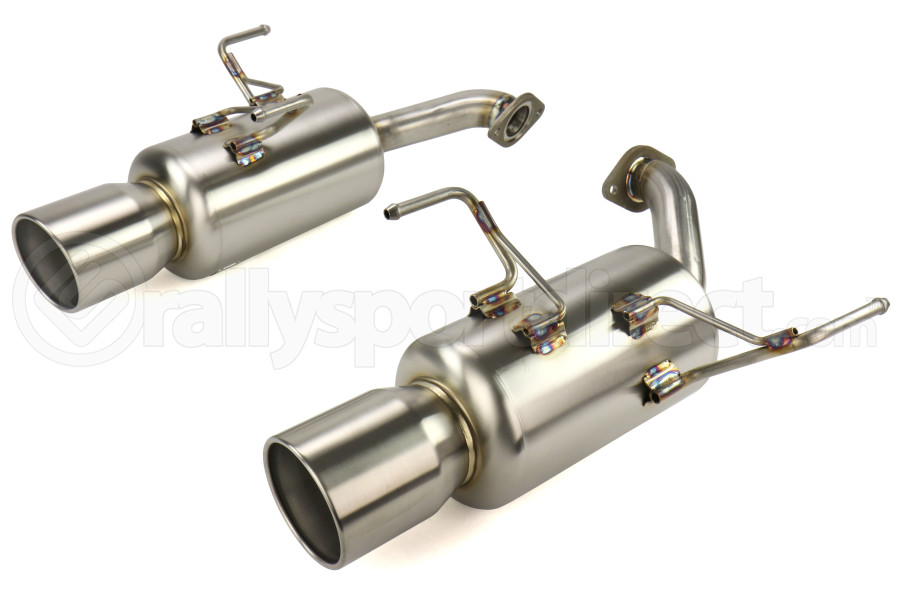
Each of these different exhaust types’ name is a description of the parts they contain. An axle-back exhaust contains the exhaust components from the rear axle to the back of the car. Most frequently, this includes a muffler and exhaust tips.
Some vehicles have dual mufflers making for a fairly expensive axle-back option. But, this form of upgraded exhaust will typically still be the least expensive.
Muffler(s) and Exhaust Tips
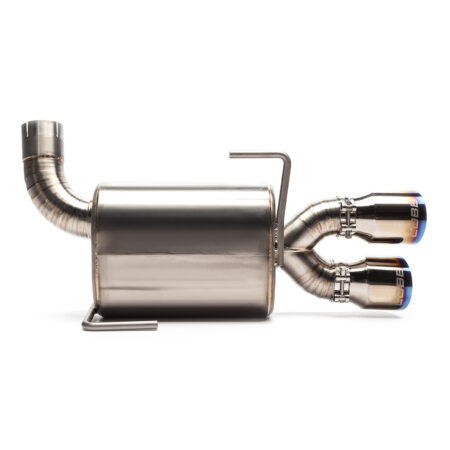 |
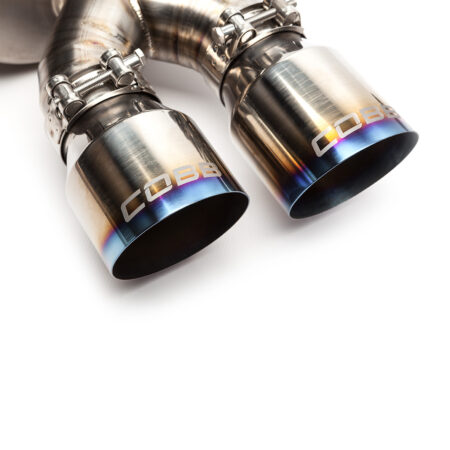 |
An axle-back system will generally offer an enhancement in asthetics (by way of upgraded mufflers and exhaust tips shown above) and sound. However, it is uncommon to pick up any power gains from an axle-back system.
Cat-Back Exhaust
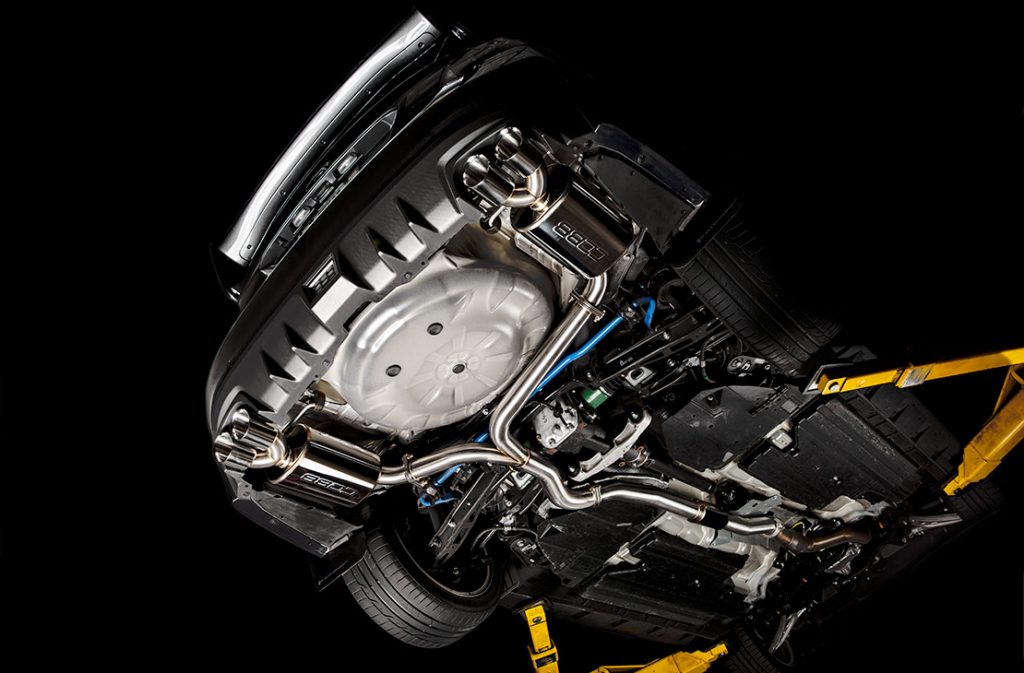
A cat-back exhaust system is a step up from the axle-back. As its name implies, it contains all sections of the exhaust system from behind the catalytic converter to the back of the car. For most platforms, the cat-back exhaust contains a midpipe which flows into all of the previous components mentioned in the axle-back.
Midpipe
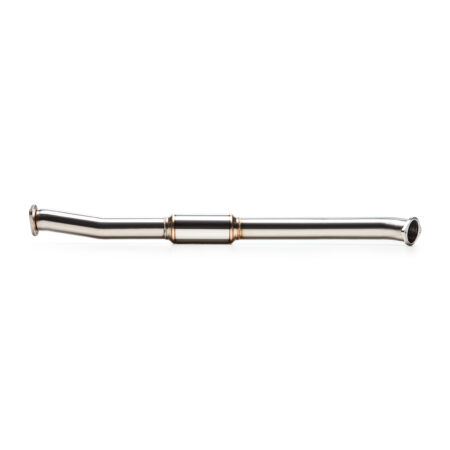
A midpipe (pictured above) simply connects the downpipe section to the axle-back section. This section is typically fairly well designed from the factory so, like the axle-back exhaust, its replacement doesn’t usually yield any significant power gains.
One main difference to be aware of for this section is the presence or lack of a resonator (the bulge pictured in the midpipe above). A resonator’s purpose is to resonate exhaust noise in preparation for the mufflers. This doesn’t technically remove any sound, but it will change it significantly and greatly affect the final exhaust note. This section of the exhaust won’t really contribute or prevent any power gains. But, since it affects the exhaust tone so greatly, we typically suggest giving different systems a listen to you can determine whether you want a system with or without a resonator.
Turboback Exhaust
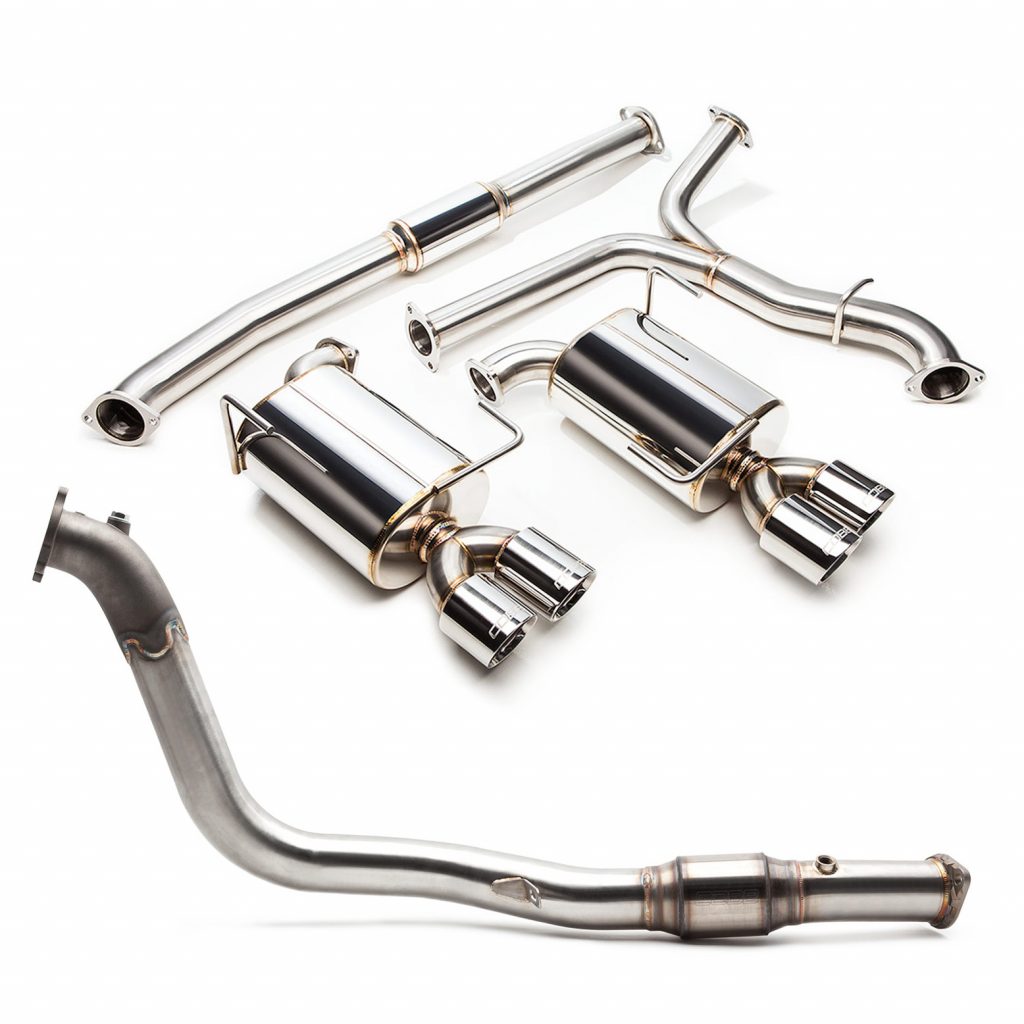
Like our previous versions of exhaust systems, the name says it all. A turboback exhaust system contains everything from behind the turbocharger to the rear of the car. This is the downpipe and then everything contained in the cat-back exhaust.
The downpipe is usually the most restrictive portion of the factory exhaust system. An upgrade here (along with the appropriate tuning to go along with it) can yield some significant power gains. For example, with only a COBB Downpipe and Stage 2 off the shelf map from the Accessport, the Subaru WRX STI gains 30% more torque over stock!
Downpipe
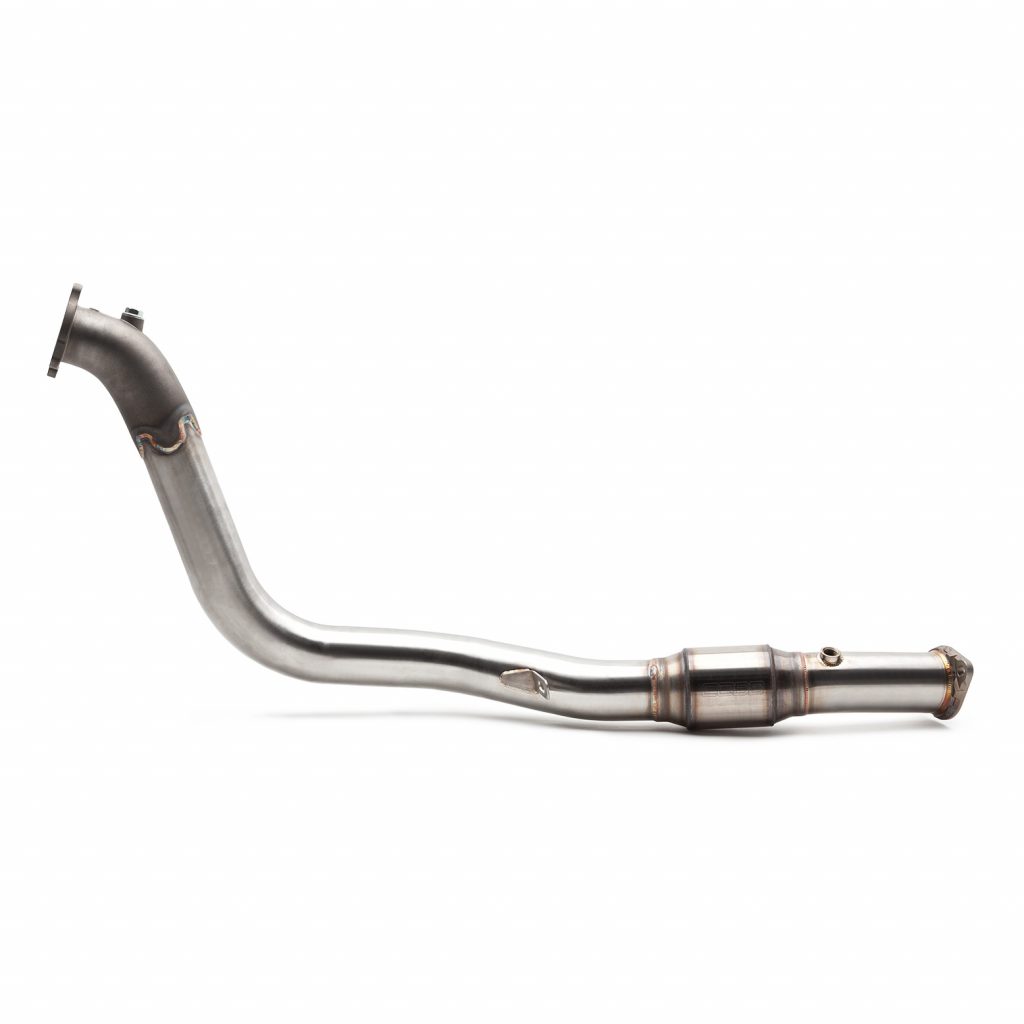
There are several different designs of downpipes each which there own pros and cons. Check out our post on Different Types of Downpipes Explained for the low-down. The most significant difference among downpipes is whether or not they contain a catalytic converter.
There are lots of details on catalytic converters linked above so we won’t go into too much detail here. The key takeaway is we always recommend using a downpipe with a high-flow or OEM catalytic converter. This will not only help meet emissions standards, but also for performance and safety of the car. In most vehicles we support, using a catless downpipe can cause boost creep, or uncontrollable boost. This is typically something that tuning cannot fix as it is a mechanical issue that can only be resolved with a catted downpipe.
None of our OTS maps support cars with bypassed emissions equipment. We recommend welding on a catalytic converter or getting a downpipe with a cat already installed.

So if i was to prchase a 3 inch catted downpipe do i need to also purchase cat back exhaust or axleback exhaust
Hi David,
You wouldn’t necessarily NEED to. You would need a downpipe that fits with the rest of your existing exhaust (many aftermarket ones do). Keep in mind you will need the proper tuning for the downpipe once added.
Kyle@COBB
Do you do Hondata in Austin?
Hi Jack,
We do not. Sorry for the bad news.
Kyle@COBB